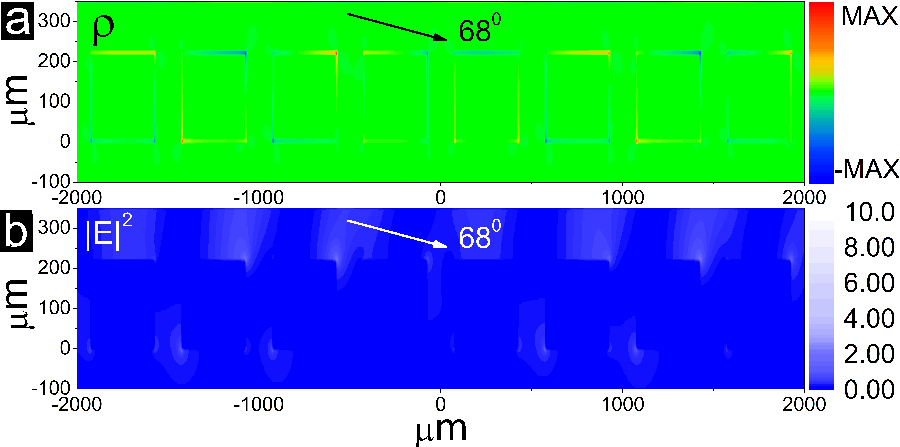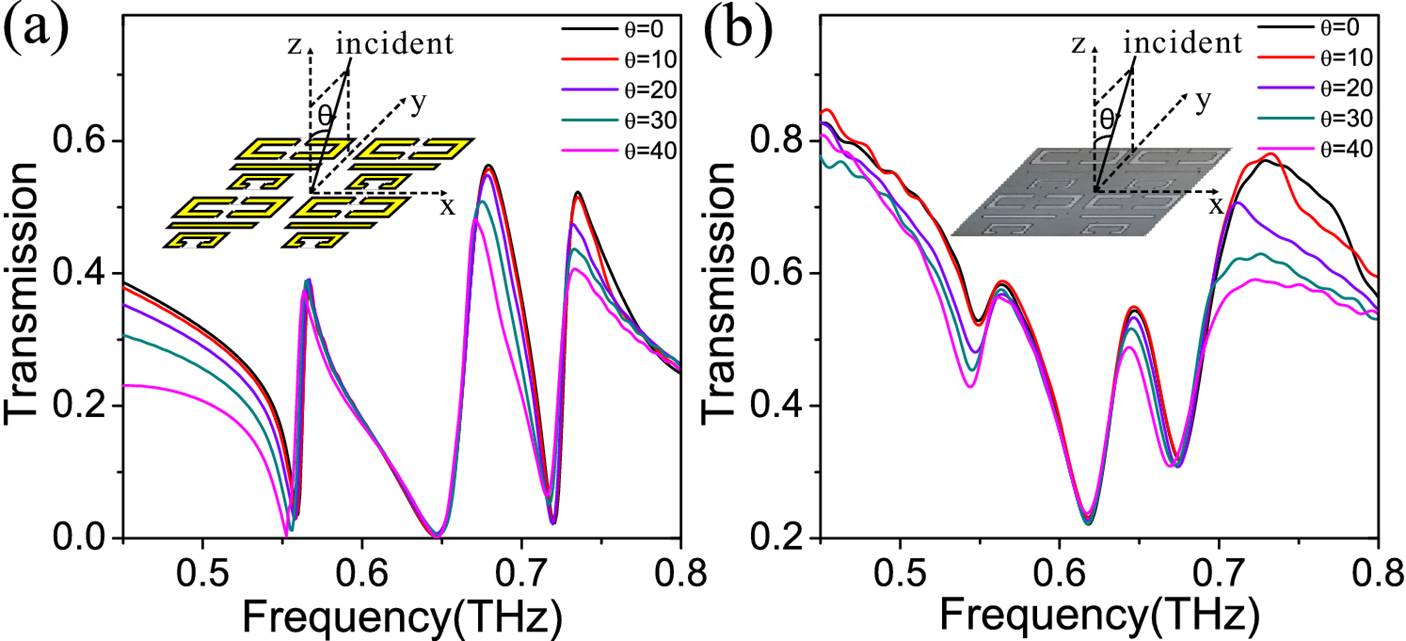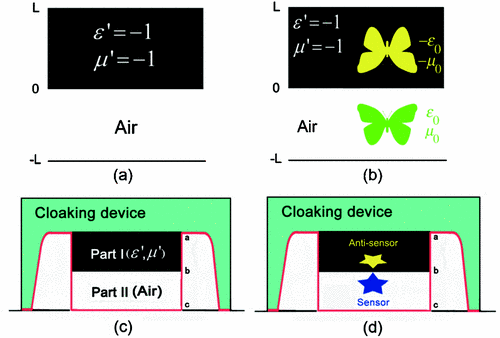Plasmonics and Photonics
 |
Making metals transparent, which could lead to fascinating applications, has long been pursued. Here we demonstrate that with narrow slit arrays metallic plates become transparent for extremely broad bandwidths; the high transmission efficiency is insensitive to the metal thickness. This work provides a guideline to develop novel devices, including transparent conducting panels, broadband metamaterials, and antireflective solar cells. |
Metamaterial
 |
In this Letter, we construct a metamaterial with dual-mode electromagnetically induced transparency (EIT)-like behavior by introducing “bright atoms,” “quasi-dark atoms,” and “dark atoms” simultaneously. The dual-mode EIT-like behavior has been demonstrated both experimentally and theoretically in terahertz (THz) regime. At two EIT-like modes, slow light is also observed as two time-delayed wave packets, and the effective group refractive index can reach 102. Furthermore, stable dual-mode EIT-like behavior is verified in this metamaterial for a wide range of oblique incident angles. |
Transformation Optics
 |
We demonstrate in this work a unique approach for watching outside while hiding in a carpet cloaking based on transformation optics. Unlike conventional carpet cloaking, which screens all the incident electromagnetic waves, we break the cloak and allow incident light get into the carpet. Hence outside information is detected inside the cloak. To recover the invisible cloaking, complementary techniques are applied in the broken space. Consequently, a hiding-inside and watching-outside (HIWO) carpet cloak is sewed, which works as an invisible cloaking and allows surveillance of the outside at the same time. Our work provides a strategy for an ideal cloak with “hiding” and “watching” functions simultaneously. |
Acoustic Metamaterial
 |
In this work, we demonstrate that acoustic waves can achieve extremely flat transmission through a metallic grating under oblique incidence within multiple frequency bands separated by Wood’s anomalies. At the low-frequency band, the transmission of acoustic wave is independent of the frequency and presents a flat curve with the transmission efficiency reaching about 100%; while at high-frequency bands, the transmission decreases to be lower flat curves due to the diffraction effect. The transmission efficiency is insensitive to the thickness of the grating. This phenomenon is verified by experiments, numerical simulations, and an analytical model. The broadband high transmission is attributed to the acoustic impedance matching between the air and the grating. This research may open up a field for various potential applications of acoustic gratings, including broadband sonic imaging and screening, grating interferometry, and antireflection cloaking. |
